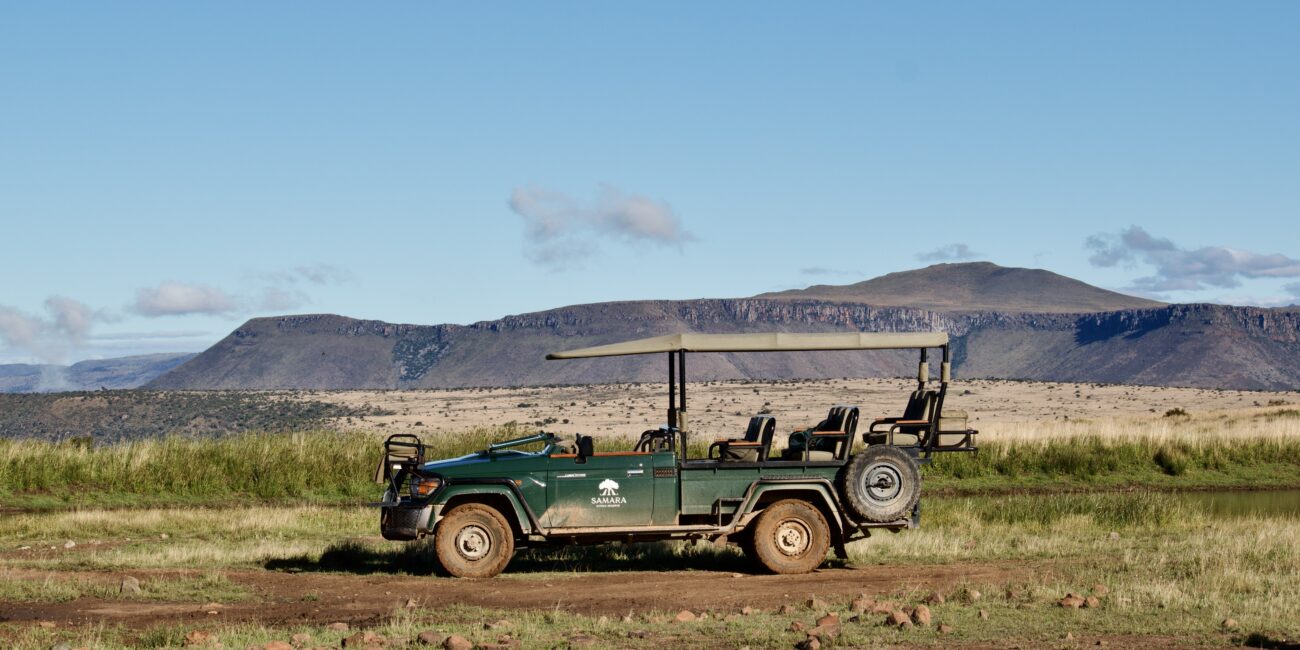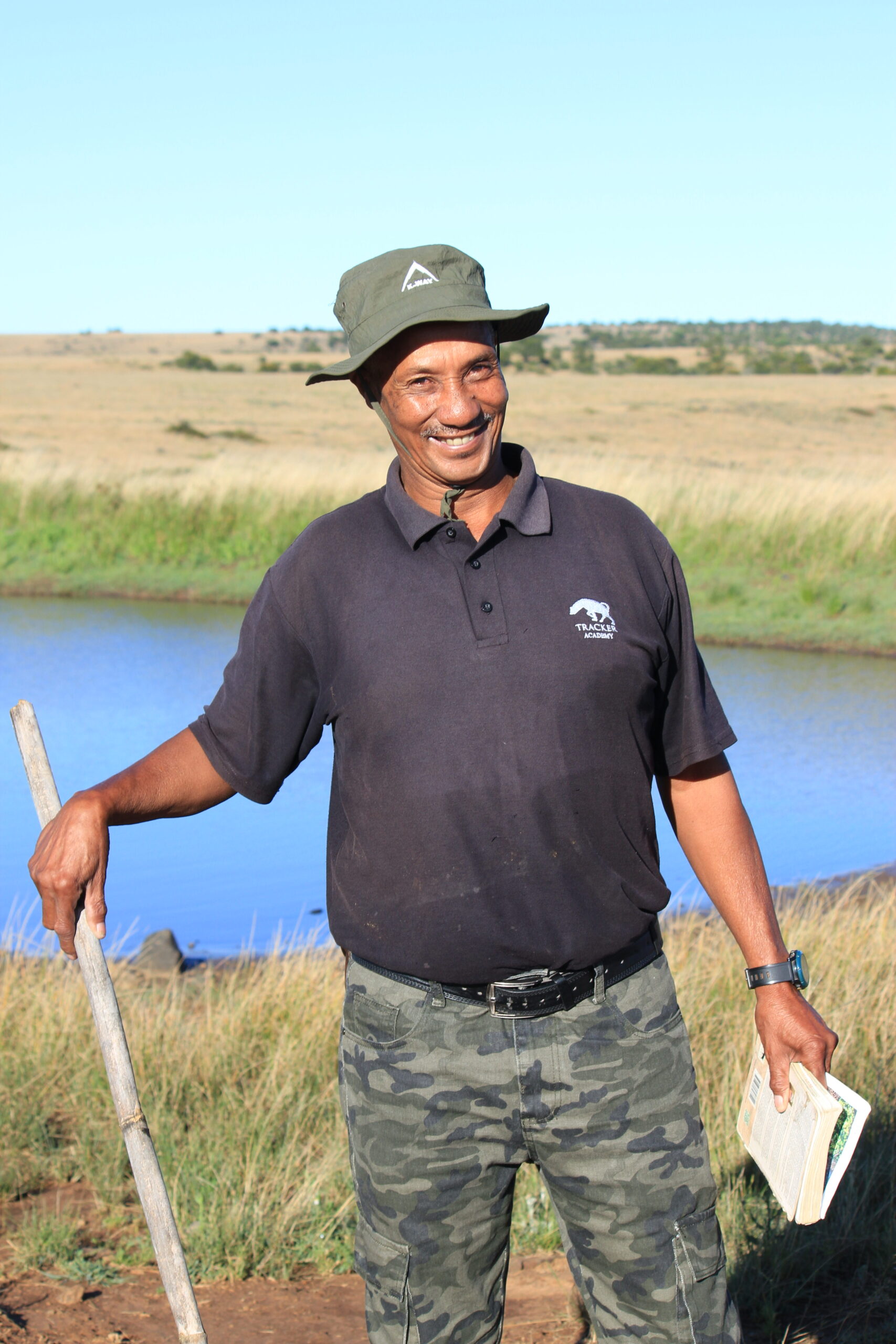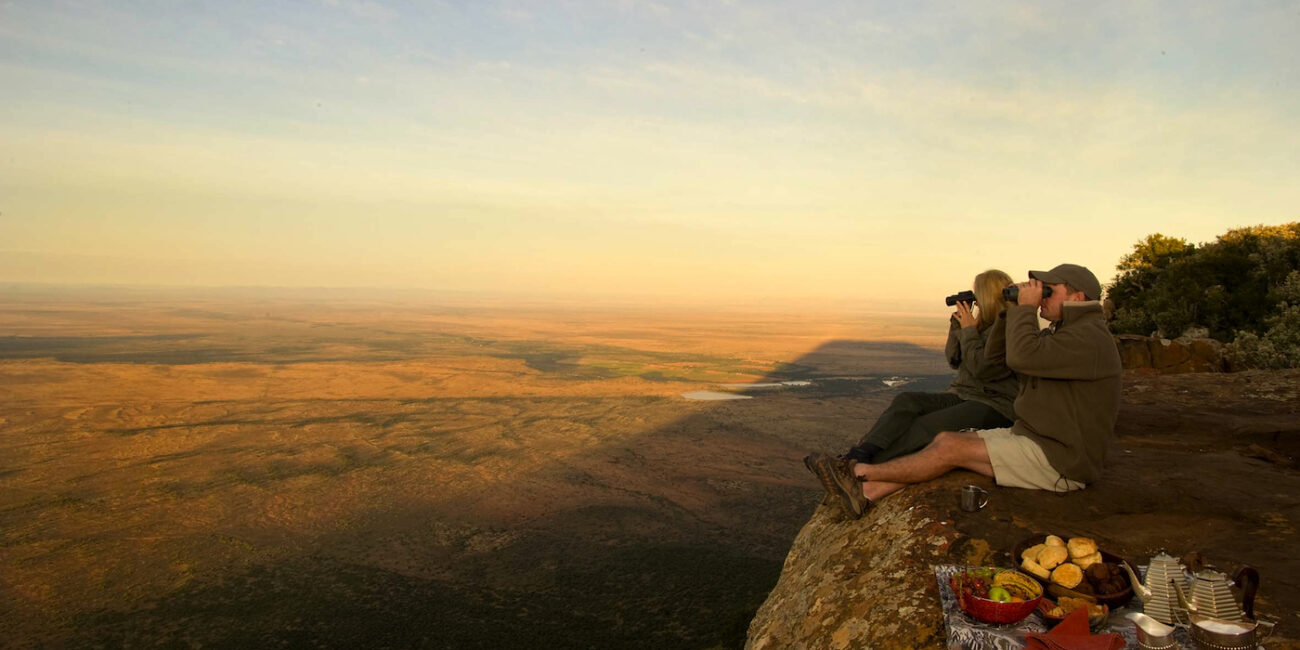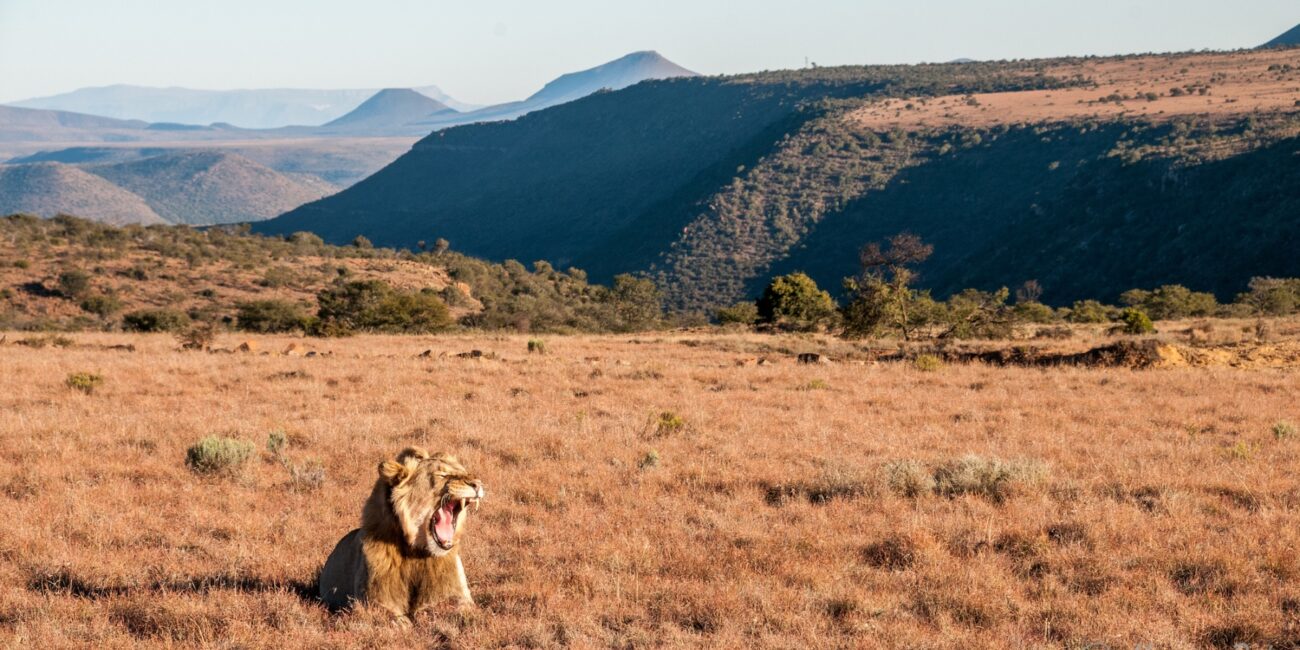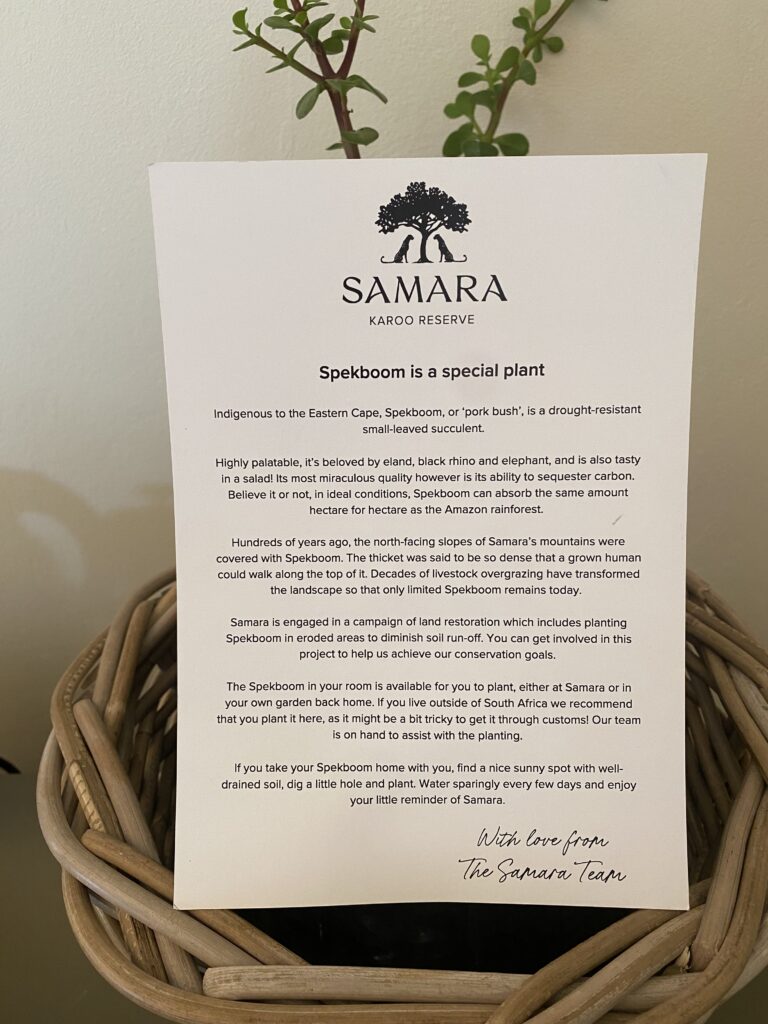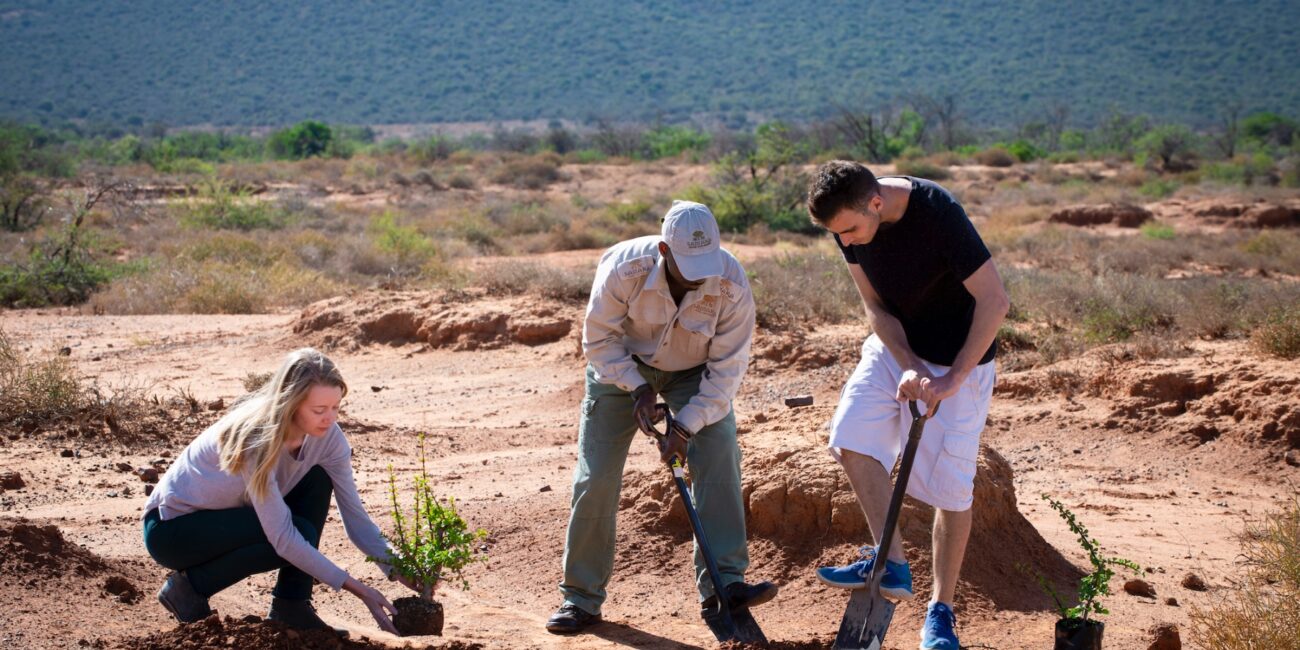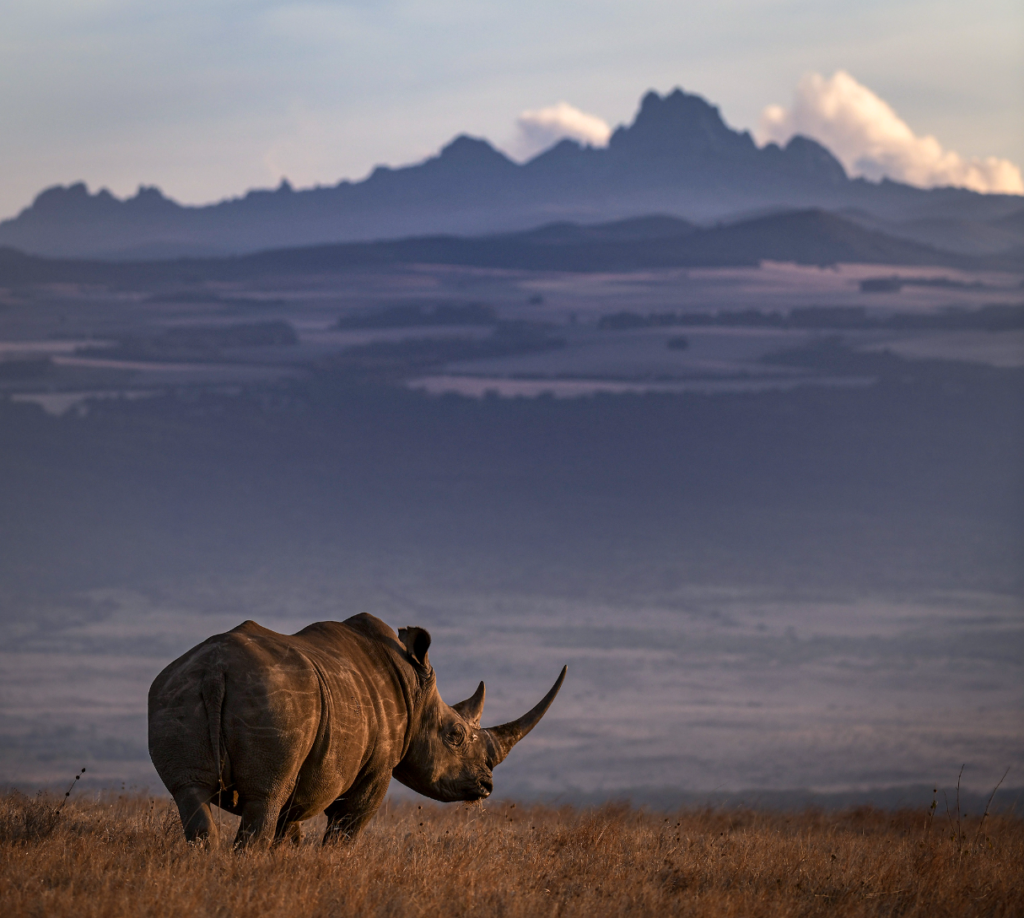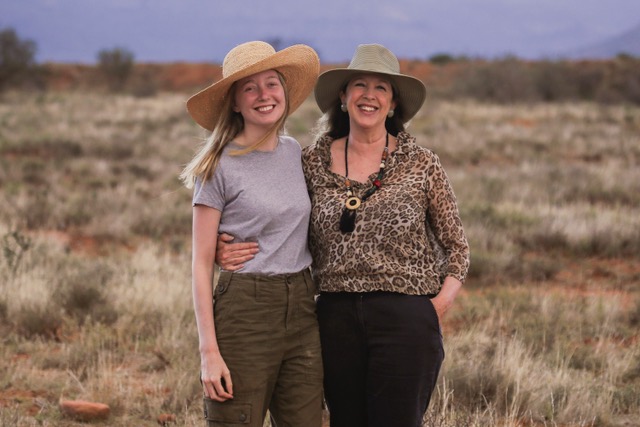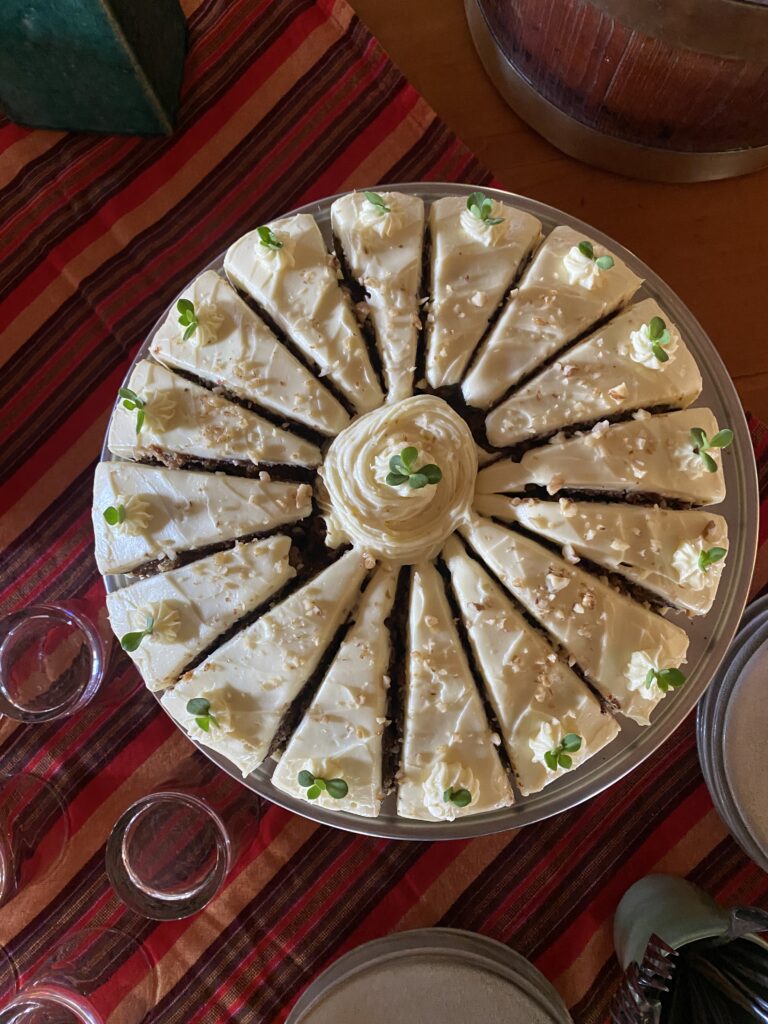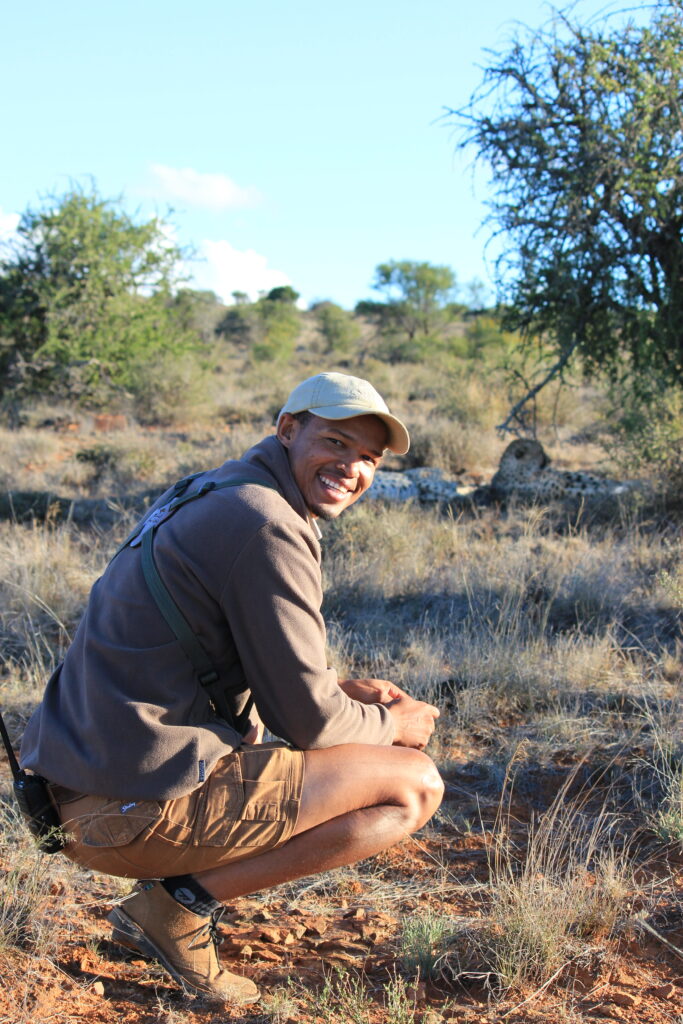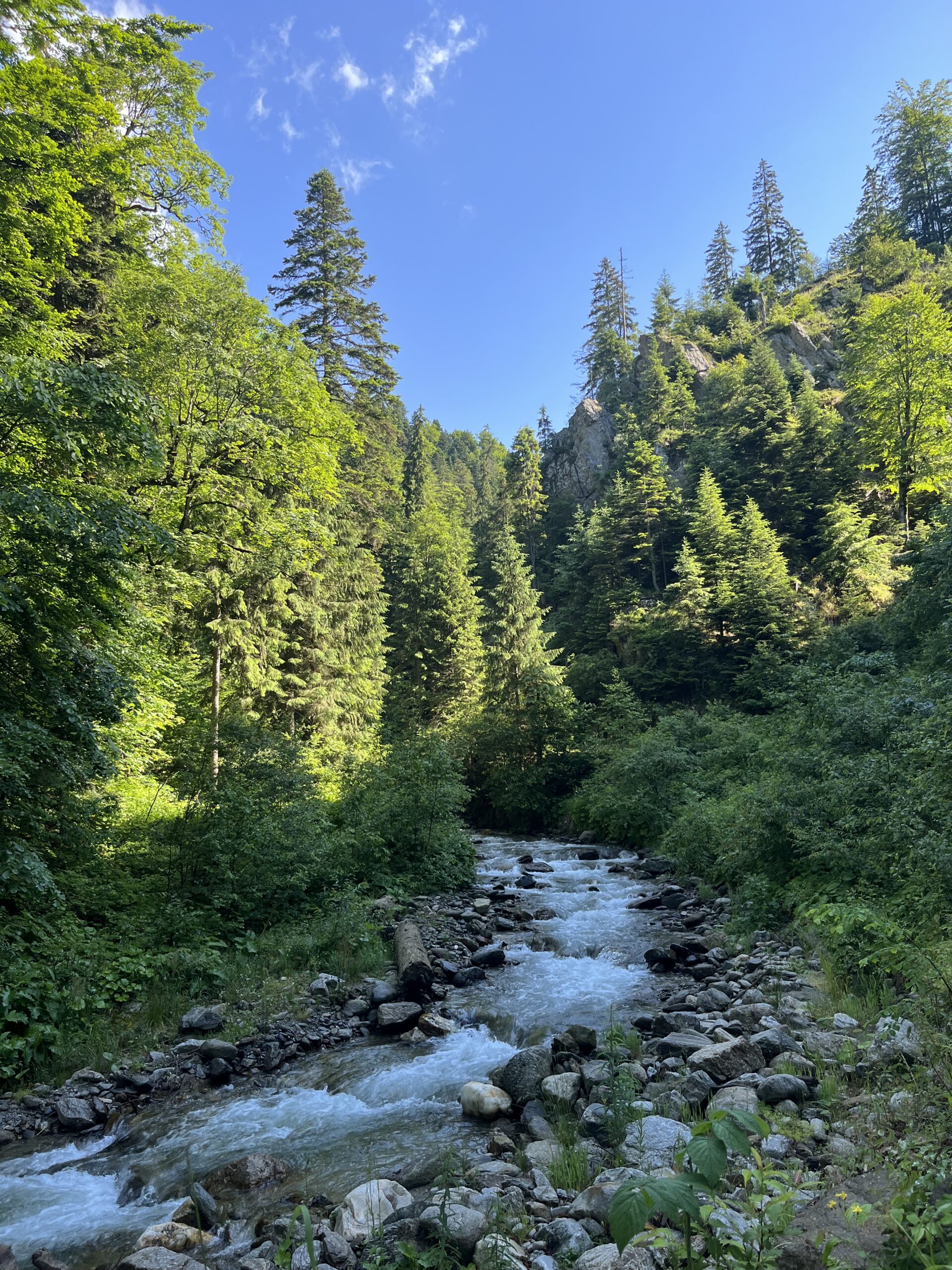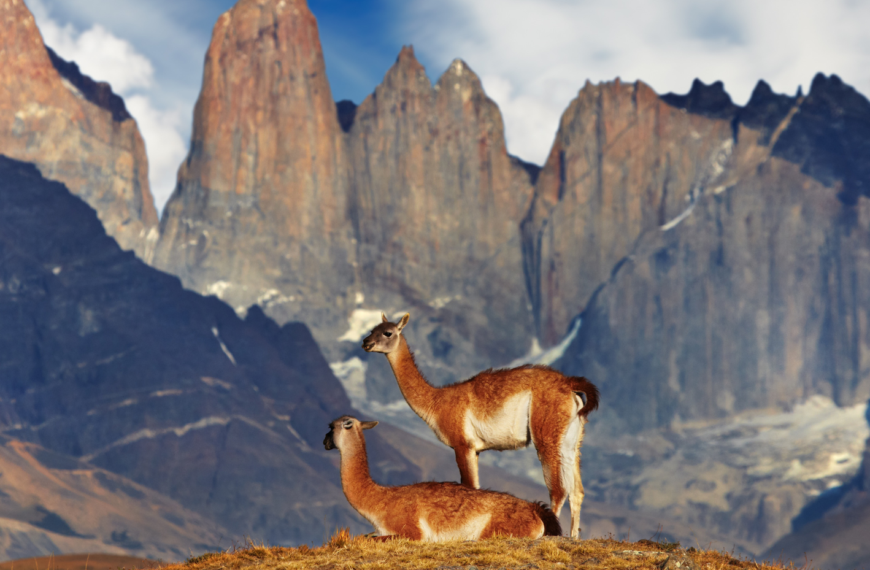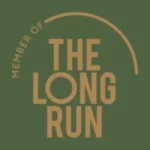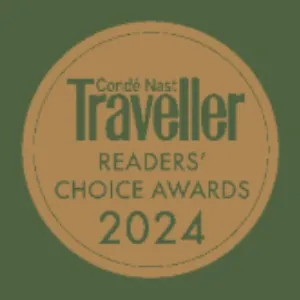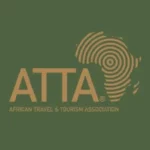Samara Karoo Reserve is situated in The Great Karoo which stretches across four provinces. It constitutes a vast semi-arid swathe of the South Africa landscape, characterised by extensive open plains bordered by dolerite-capped mountains.
The name Karoo comes from an ancient San word meaning Land of Great Thirst.
My journey to Samara Karoo Reserve began in Cape Town with car hire and an 8hr scenic drive that provided ample opportunity to soak up my surroundings and familiarise myself with the Great Karoo’s landscapes. An alternative travel option is via scheduled flight to Port Elizabeth, or via charter flight to Graaff Reinet.
Route 62 is one of the driving routes to reach Samara and leads through the wine-growing areas of Wellington, Tulbagh, Worcester, Robertson and the Klein Karoo making it one of the longest wine routes in the world. The 400,000 km² wilderness of the Great Karoo is captivating in its immensity and one can truly appreciate the space and isolation whilst driving through winding, dusty mountain roads, and scatters of colourfully atmospheric Dutch settler towns.
5:30
I woke to the rich smell of wet earth and the birds’ early morning chorus. During the summer months of November-March the weather is sunny and due to higher rainfall the bush is green and lush. The rain drummed gently on the metal roof of the newly renovated farmstead as we enjoyed a steaming cup of rooibos tea before the morning drive.
We were joined on the drive by Karel ‘Pokkie’ Benadie, one of only nine Master Trackers in South Africa. Pokkie’s introduction to tracking in the Karoo region began early, when he used to help his father track and release animals caught in poaching snares on Karoo farms.
In 2013, Pokkie was named as one of South Africa’s 21 Icons for his work in tracking, alongside such greats as Nelson Mandela and Archbishop Desmond Tutu. He has also worked as the chief trainer at The Tracker Academy, a training division of the SA College for Tourism, operating under the auspices of the Peace Parks Foundation and funded by the Rupert Family Trust, which was founded and hosted in part at Samara from 2010 until 2022.
"Plants, animals, human beings, they’re all one. All of us are part of nature...if we can protect all of that, it will be so good for our country."
7:00
We drove to the mountaintops crowning Samara Karoo Reserve and entered a completely different world. In stark contrast to the semi-arid shrubland below, the mountain top boasts lush grassland earning it the local name of ‘the Samara Mara’ due to its resemblance to the sweeping grasslands of Kenya’s Masaai Mara.
We were welcomed by gently moving herds of gleaming black wildebeest, Cape mountain zebras, and gemsbok relaxing in the tall grass. Our first stop to get off the vehicle was by a natural waterhole where fresh tracks could be easily in the surrounding wet mud. Pokkie is an expert when it comes to medicinal plants and found some canterbush, a local plant used for supporting the immune system and soothing digestive issues when boiled into a bitter-tasting tea. He also identified many aquatic birds as well as eland, porcupine, and even lion tracks.
Samara’s lions are known to enjoy the habitat of the Samara Mara and one can understand why when the endless views of the great karoo unfold as you reach the mountain edge. There is a particular spot where it is possible to arrange a picnic to enjoy these views over a long lunch, however, our stop for morning coffee was a perfect alternative.
Samara Karoo Reserve is situated in the western-most extent of one of just 36 Global Biodiversity Hotspots, the Maputaland-Pondoland-Albany Hotspot. It is known as the Camdeboo region, loosely translated from San language as Place of the Green Hills.
The 70,000-acre private reserve contains an array of varied habitats from plateau grasslands, savanna, thicket and semi-arid plains and, since the reintroduction of lions in 2019, is the Great Karoo’s only Big Five conservancy. Samara is also a member of The Long Run and has pioneered land-use change in the region, painstakingly restoring 11 former livestock farms into a born-again wilderness.
10:00
After a glorious spread of hot and cold breakfast back at the lodge, it was time to relax and enjoy the beautiful views as the moving clouds created an ever-changing painting across the wide blue skies.
Karoo Lodge has a variety of comfortable indoor and outdoor lounge areas along with an entertainment room with a pool table and television for rainy afternoons, or the swimming pool to take a dip during the hotter summer days. It is not uncommon to have a visit from a friendly sounder of warthogs or a peaceful tortoise as it makes its way across the green lawn. Moving away from the main lodge area, each suite at Karoo Lodge blends beautifully with the landscape and offers a private outdoor seating area and an outdoor shower next to a low-lying ground fence so one can prepare to enjoy animal sightings at any moment!
Upon arrival each guest is gifted a spekboom tree in their suite, which you can plant with your guide during a game drive to assist in Samara’s rewilding efforts. Spekboom are a brilliant species for carbon sequestration and their roots grow sideways, helping to stabilise the soil and prevent erosion. Being succulents that don’t grow on grasslands, the plants are perfectly suited to the arid climate of the karoo, and Samara has so far planted over 2,000 trees.
Spekboom are also very nutritious and animals enjoy grazing on them, so in order to protect the young plants, the Samara team bushpacks them with spiky acacia branches to deter other species from feeding on them before they reach maturity. Samara Karoo Reserve is currently split into two areas, one for the wild animals and the other for grazing livestock. In order to capture as much rainfall as possible, livestock is beneficial in breaking up the soil and enabling the rain to permeate it, consequently allowing for more vegetation to be planted in optimal ground conditions.
Black Rhino Translocation Project
This summer, the livestock area of the reserve will also serve an exciting new purpose, providing the home for a world first in rhino conservation – the translocation of a crash of black rhino for a pioneering breeding programme. There are currently just two private populations of desert-adapted black rhino in South Africa, one at Samara and the other in the Kalahari. Since black rhinos are naturally anxious and aggressive, protective measures have to be taken in a behavioural experiment which has never been tried before. The fence between the two areas of the reserve will allow the male black rhinos currently at Samara to bond with the females whilst avoiding any potential conflict and harm to the animals. When the time is right, these two groups will merge, hopefully sparking a new conservation success story that can be replicated across other reserves to help bolster species numbers.
14:00
I had the opportunity to meet with Isabelle Tompkins, the daughter of Sarah Tompkins, who founded Samara with her husband, Mark, over 25 years ago. It was wonderful to hear her first-hand account of developments on the reserve over the years, including the projects Samara supports in the local community, and the vision for this large-scale rewilding project to expand the conservation ethic beyond the reserve’s boundaries, working with local stakeholders to create a 3-million-acre conservation landscape.
16:00
The delicious and locally-sourced food at Samara serves as a structure for the day’s activities and, at 4pm, a high-tea is served before the evening drive. I was lucky enough to try a homemade spekboom cake with cream cheese frosting that was even garnished with spekboom leaves!
The evening drive promised to involve one of the most unique experiences available at Samara Karoo Reserve – tracking cheetah on foot.
We set off on a breathtaking game drive, full of excitement and anticipation, past herds of leaping springbok, gently ambling giraffes, and flocks of nesting blue cranes (South Africa’s national bird). En route, we drove along the reserve’s river keeping our eyes peeled for its favourite local resident, Jeremey the elephant, who can often be found enjoying the wealth of leafy vegetation in this particular area.
Jeremy was recently relocated to Samara from the nearby Addo Elephant National Park, a reserve which has had no history of elephant poaching, so we were able to get off the vehicle and approach Jeremy on foot, while he remained relaxed and continued to munch on the sweet thorn trees decorated with brilliant yellow flowers.
The larger animals which have been relocated to Samara were all collared during their introduction, and now their movements and wellbeing can be monitored to help ensure the smooth transition to their new home.
Using a GPS tracker, we were able to pick up a signal for the cheetah which was heading up a rocky escarpment. We were informed the car would have to be left behind, and the rest of the journey would take place on foot. Quietly walking behind the our guide Christiaan, I was impressed by the immense scale of this place as the wind rippled the grass and the dipping sun began painting the mountain range deep colours of pink and orange.
As we moved over the crest of a hill we spotted them. Two brothers sleeping under the shade of a low lying acacia tree, full-bellied and drowsy after a recent kill. It was magical to experience these beautiful animals in such close proximity without feeling like we were disturbing their space, and they remained relaxed whilst alert to the sounds carried on the winds.
Cheetahs were the first big predator reintroduced at Samara and since then more than 50 cheetah cubs have been born on the reserve.
We left the cheetah and returned to the vehicle where we enjoyed sundowners beside the newly constructed Plains Camp. This is a wild tented camp with unparalleled views of the mountain range, offering an opportunity to truly disconnect from the outside world. About an hour’s drive from Karoo lodge it is possible to truly soak up the magic of the bush – sat before the campfire, beneath a blanket of stars, and surrounded by the guttural calls of Samara’s nocturnal wildlife.
Join us this November (2nd – 8th, 2024) to experience the wild wonders of the Great Karoo and to witness firsthand the incredible impact Samara’s species reintroduction and habitat restoration programme is having on surrounding landscapes and local communities. The journey features a night in vibrant Cape Town followed by an immersive five-night stay on Samara Karoo Reserve, where guests will be hosted by mother-daughter team, Sarah and Isabelle Tompkins, and explore the reserve alongside South Africa’s leading wildlife scientists, botanists and trackers.
Get in touch with the team at connect@stg-journeyswithpurposeorg-staging.kinsta.cloud to find out more, or register your interest to join the journey via the link below.
$12,545 per person based on double occupancy, including a 20% donation to Samara’s spekboom, black rhino and community projects.
Personal hosting by Sarah & Isabelle Tompkins | Guided game drives and bush walks with Karel Pokkie | Behind-the-scenes access to Samara’s black rhino project & conservation activities with Professor Graham Kerley | Optional night at Plains Camp or fly-camping | Charter flight from Cape Town to Graaf Reinet | Full board accommodation throughout

